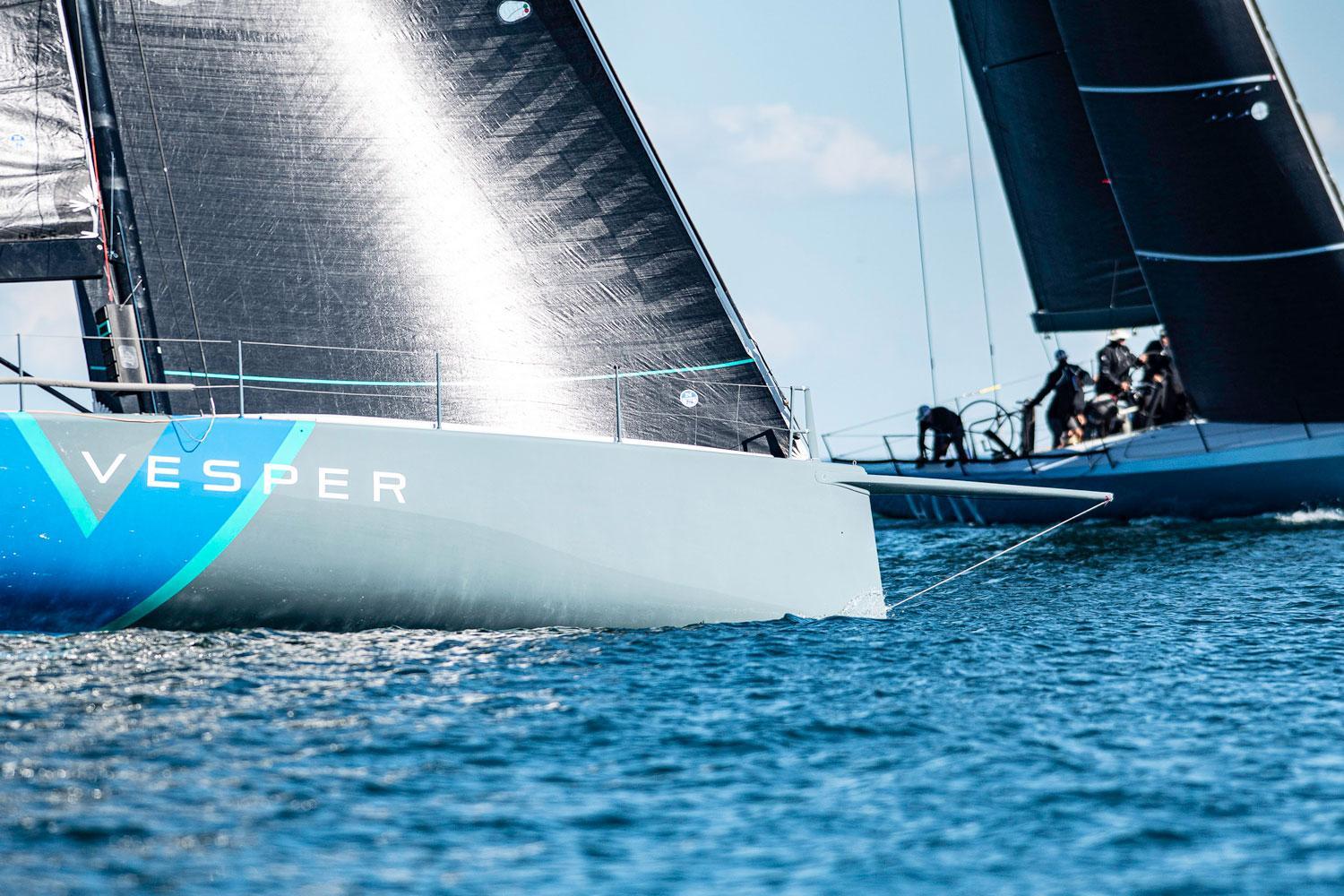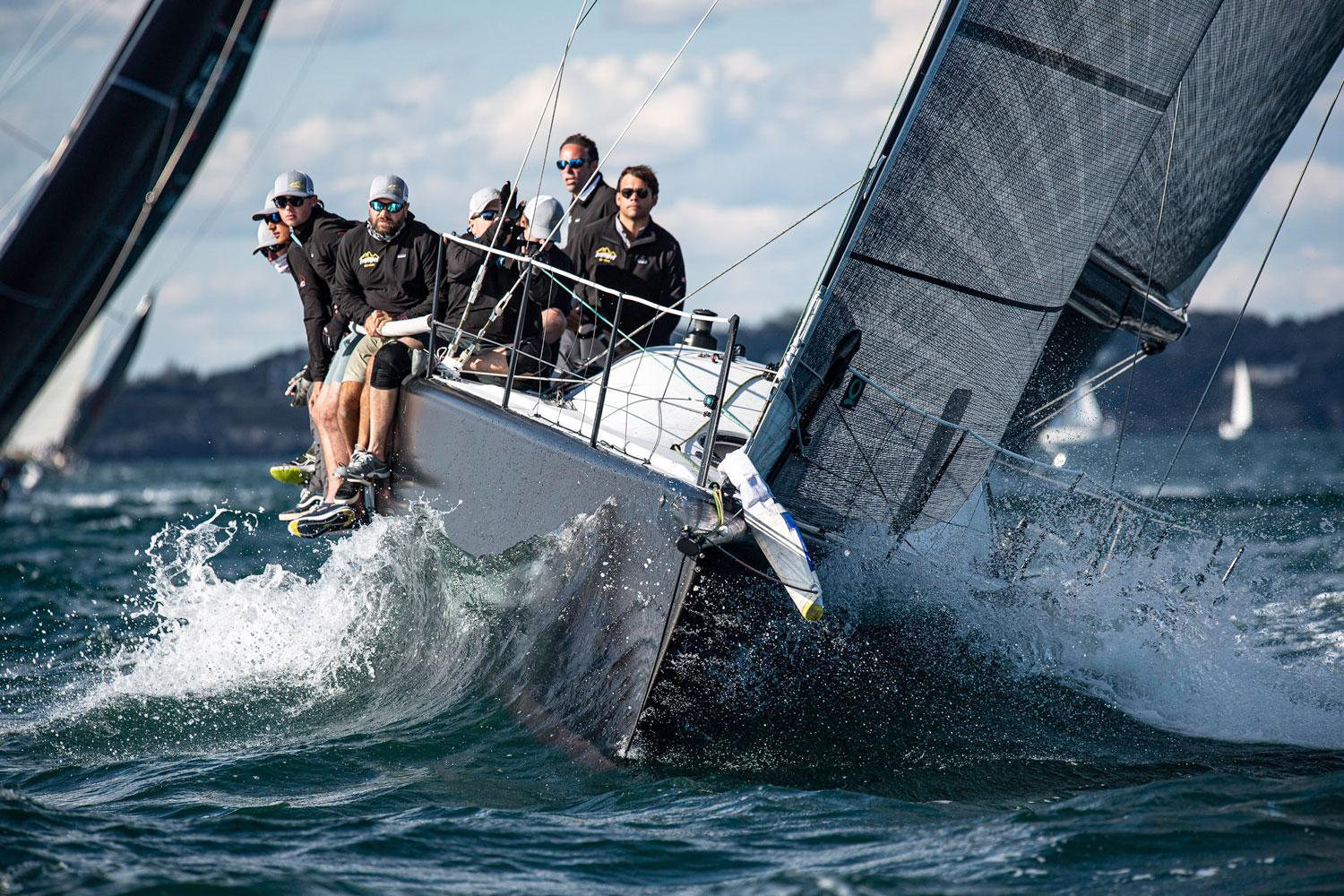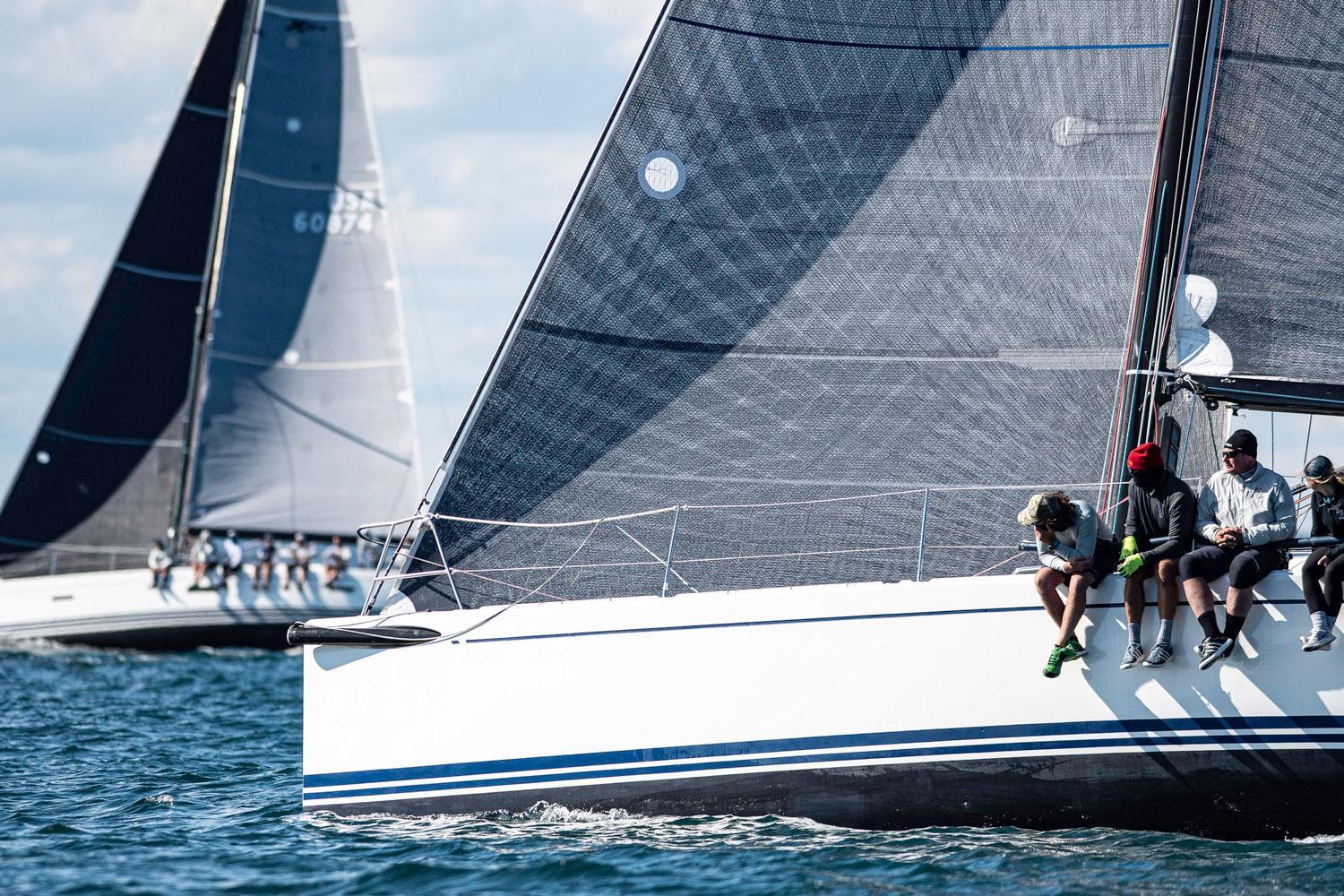2022 ORC Q&A
Ed Cesare, chair of the New York Yacht Club’s Rating and Measurement Rules committee and a veteran navigator, sat down for an interview about the Club’s recent move to the ORC rating rule, in place of IRC. Cesare took over the committee in 2019, about the time that the change in rating rules occurred, and has the experience of the past three years working with the rule. Here he highlights some of the benefits of the ORC Rule.

Really, like many Organizing Authorities, we followed the numbers. For whatever reason, the racing fleet migrated away from IRC. Mainly I think it was due to a combination of folks always looking for a better mousetrap and aggressive marketing from the Offshore Racing Congress that helped advance the rule’s popularity and attracted participation. So, the short answer is, we followed the fleet.
The ORC Rule has a number of features that make it very attractive. First, the ORC VPP is completely open. Anyone can access it and run it. The IRC Rule was a bit of a black box; you put your boat’s measurements into the equation and it produced a handicap, but no one fully knew how the handicap was processed. That’s always been a feature of IRC that some have quarreled about.
So, the openness that the ORC Rule champions is attractive, as is a variety of scoring tools, the first of which is the ability to offer different ratings for different wind velocities. That’s attractive to owners who feel that their boat may underperform in a given wind range. ORC was able to leverage these features into a compelling case.
The ORC Rule is a product of the Offshore Racing Congress, an international body composed of representatives from sailing nations around the world. Each nation has a certain number of delegates to the Congress based on the number of certificates issued to its owners. For example, the U.S. now is the second or third largest “market” and we have four delegates
The Offshore Racing Congress dates back to the 1970’s and the transition from the CCA Rule to IOR. The U.S. was a founding member of the ORC along with the Royal Ocean Racing Club, the owner of the IRC Rule. In the U.S., the ORC Rule is administered by US Sailing.
Generally speaking, the ORC Rule has become prominent in continental Europe, the Mediterranean and, to some extent, Baltic nations. The IRC Rule remains popular and strong in the U.K. and along the Atlantic coast of France. IRC is also used for all but one of the five great 600-mile races, such as the Fastnet, Sydney-Hobart, Middle Sea, and the Caribbean 600.
As I mentioned, the multi-number system was immediately attractive to owners. They reason, “Gosh, my boat does not perform well in light air and the ORC sees that and adjusts my rating – that’s great!”. While multiple wind bands help smooth out inequalities in performance throughout the wind range, as the rule has been used more it’s been found that the triple number system is not as powerful as owners expected it to be. Mainly because it’s just three bands and the step from light to medium or medium to heavy can be coarse.
In response to that, a submission was made to the ORC last fall from U.S.-based organizing authorities for five bands of wind speeds, and the ORC has cooperatively installed that system for U.S. certificates this year. The higher resolution offered by five wind bands over three will match a boat’s rating for the day more closely to observed conditions. It should also more accurately account for the speed gain of boats that can get on a plane in moderate conditions.
In addition to selecting the wind strength, ORC offers a variety of course configurations that range from a simple windward/leeward, which assumes that half of the time is spent beating and half is spent running, to “All Purpose,” with an equal distribution of all wind angles. There are also predominantly upwind and predominantly downwind options. Finally, the ORC has and will construct “custom” courses for certain races like the Chicago-Mackinac Race.
So, to answer the question, all of these tools do contribute to an equal playing field. But owners need to understand that the fidelity of their ultimate corrected time depends on how closely the actual conditions during the race matched the wind matrix (true wind speed and true wind angle) used to score the race.

The ORC states that the race committee should announce the wind band prior to the warning signal, but should also reserve the right to change that selection if the conditions warrant. The logic behind that is that if you want to know how far ahead or behind you are on the course, you need to know how the race is being scored. The other side of that is why not wait until the race has concluded to observe the conditions and select an appropriate configuration as opposed to an expected configuration. Opinions differ widely as to which is better, but there’s a growing sense that the best option is to choose the wind band before the start and stick with it. The Club is actively working to develop a set of standard operating procedures for this thorny race management problem. We want the selection to be as objective as possible with the ability for competitors to know how they are doing on the racecourse.
The transparency of the VPP and the variety of scoring tools are the biggest distinctions. But another one is that on the ORC website (www.orc.org) there’s a sailors’ services portal through which anybody can access any certificate for comparative or design purposes. The portal is a very nice tool.
I would say the Club feels as though the rule continues to show real promise. And that managing expectations and educating owners about the rule is really important because it’s complicated. IRC was simple in practice, one rating for all conditions. In an effort to create a better system, ORC strives to account for different conditions. In doing so it introduces a LOT of complexity both in scoring systems and race management. Owners need to be aware of the complexity, learn to manage it themselves and appreciate that the system, while more sophisticated, will not be perfect. The Club does feel that handicap racing here in the Northeast is growing again or at least has stopped shrinking. For that trend to continue it’s important that ORC succeed. And we are working very hard to make it so.
A formal survey of owners has yet to be conducted, but we’ve had specific and vocal complaints about how the rule handles planing boats versus displacement boats, particularly over 45 feet in length, and how it handles certain boats that carry a perceived favorable or unfavorable rating. At the same time there’s been great racing, particularly in the 30- to 40-foot range, classes B and C. It would appear that some PHRF owners are moving to ORC, but I hasten to add that both the New York Yacht Club and US Sailing and other important organizing authorities feel that PHRF has an important role in the sport and needs to be supported.
Because of the complexity of the system, it’s important for owners not to conflate issues. So, in addressing disappointments, we need to be specific. Does the problem lie with a perceived deficiency in the VPP? With the architecture of the scoring tool? With the choice of which tool to use? With the class breaks? Or, maybe, just maybe, we didn’t sail quite as well as we thought we did. And, after all, the sailors on that other boat over there are pretty good too.
And, it’s vitally important that US Sailing manages the application process and the issuance of certificates quickly, efficiently and accurately. Lastly, everyone needs to recognize that the VPP which underlies the whole thing must also continue to evolve and get better.
There are two kinds of certificates. ORC International (ORCi) is the most comprehensive certificate. It takes into account the geometry of the boat either via offset files from the designer or a laser scan of the hull. From that offset file or scan the rule determines what the boat should displace. Then the freeboards are measured in-water, which takes into account what’s inside the boat to get to an overall weight. That is the most thorough and sophisticated way to measure a boat for an ORC rating.
The ORC’s sister product, ORC Club, does not require offsets, scans or freeboards. For an ORC Club rating the owner sends in the sail measurements, which are verified by the sail maker, and then the rating officer looks at sail measurements, mast heights, keel depth, the type of rudder, takes all of those factors into account and compares with similar boats to derive a so-called club rating. It’s super simple, easy to get and inexpensive.
Organizing authorities have observed that there are limitations to the club product. It works great for a boat that is well understood with similar types out there. As soon as the boat gets more complex and faster, the club product loses accuracy in the rating it produces. To address that problem, the New York Yacht Club, Storm Trysail Club, Chicago Yacht Club and other organizing authorities are mandating that if your boat rates faster than 560 GPH, you must have an ORCi certificate. That requirement will be in place for all New York Yacht Club events in an effort to ensure high quality ratings across the fleet.

I guess I would say that an owner should consider the mission profile for his or her boat, what are the specific events they want to do? If the answer is Wednesday night racing, a local overnight and a local weekend or two, then PHRF is probably going to work great for you.
On the other hand, if you want to do a series of higher-profile events and are serious about where you place in the fleet and you’ve got a crew willing to commit to a full season’s schedule, then maybe it’s time to think about a measurement rule. If you decide to give ORC a try, then you’ll want to determine if you need an ORC Club certificate or ORCi. If you have a competitive boat, you’ll probably want an ORCi certificate for its comprehensiveness.
A good place to research all of this is the US Sailing website and the ORC website. Additionally, an informational deck on the ORC will be coming shortly.
Photos: Paul Todd / OutsideImages.com

